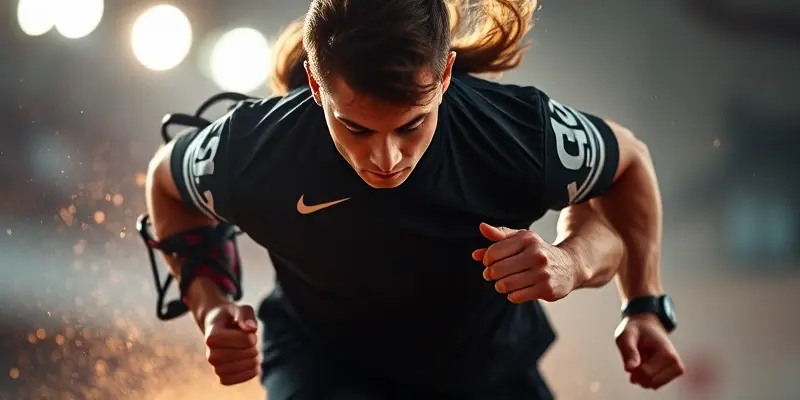Unlocking Resilience: Injury Recovery & Prevention in Fitness—Inspired by Chris Nikic
Welcome to the GymPulse Club! Whether you’re a beginner, dedicated weekend warrior, or competitive athlete, injury concerns and recovery are part of the fitness journey. By blending science-backed tips with real stories, let’s discover how you can perform at your best—safely and for the long haul.
The Power of Perseverance: Chris Nikic’s Remarkable Journey
Meet Chris Nikic—the first person with Down syndrome to complete an Ironman triathlon. Chris didn’t just cross a finish line; he shattered perceived limits and showcased the strength of incremental progress. His “1% better each day” philosophy is more than a slogan—it’s a research-backed approach that minimizes injury risk and fuels consistent growth.
What can we, as everyday athletes, learn from Chris? The answer: Resilience isn’t about avoiding setbacks, but about how you prepare, recover, and keep moving forward—one step at a time.
Common Sports Injuries: Why They Happen and How to Prevent Them
Fitness offers plenty of physical and mental rewards, but it also carries some risks. Let’s take a closer look:
Most Frequent Injuries
- Sprains and strains (ankles, knees, shoulders)
- Stress fractures (commonly in the foot or lower leg)
- Overuse injuries (tendinitis, shin splints)
Key Prevention Strategies
- Gradual Progression: Chris’s 1% daily improvement keeps training gains steady and reduces overload. Remember: Sudden spikes in volume or intensity are a fast track to injury.
- Structured Warm-Up and Cool-Down: Five minutes of dynamic stretching pre-workout and static stretches post-workout can improve flexibility and prep your body for action.
- Strength and Flexibility Work: Add resistance bands or bodyweight exercises twice a week to stabilize joints and support muscle balance.
- Listen to Your Body: If you feel persistent pain or deep fatigue, it’s a signal to rest—not to push through.
Smart Recovery: Your Guide to Bouncing Back Stronger
Injuries can feel like setbacks, but with the right approach, recovery can become your springboard.
Active Recovery Tips
- Choose gentle activities: walking, cycling, or swimming. Think of these as “tune-ups” for your muscles.
- Use the RICE protocol (Rest, Ice, Compression, Elevation) for acute injuries.
- Prioritize sleep—your body does its best repair work overnight.
Beginner Mistake Alert: Many skip rest days, hoping to speed progress. In fact, scheduled recovery days enhance muscle repair and adaptation. Trust the process!
Eat for Repair: Nutrition Tips to Accelerate Healing
What you eat plays a major role in how quickly you recover.
Essentials for Recovery
- Protein: Aim for 1.2–1.8g per kg of body weight daily to repair muscle fibers.
- Complex Carbohydrates: Fuel your training and replenish energy stores without blood sugar crashes.
- Anti-Inflammatory Fats: Salmon, walnuts, or olive oil help control inflammation.
- Micronutrients: Vitamin C (citrus fruits), vitamin D (eggs, sunlight), and zinc (pumpkin seeds) all support tissue repair and immune function.
- Hydrate! Electrolyte drinks can help, especially after sweat-heavy workouts.
Tools of the Trade: Gadgets and Gear for Recovery
Technology is a game-changer for modern athletes. Here are some favorites:
- Foam Rollers & Massage Guns: Increase blood flow, ease stiffness, and promote myofascial release.
- Wearable Tech: Heart rate monitors and GPS watches keep your training within safe intensities.
- Compression Garments: Useful post-exercise to reduce swelling and muscle soreness.
Try mixing old-school recovery, like gentle stretching, with these innovations for well-rounded repair and protection.
Mindset Matters: Staying Motivated During Setbacks
Injuries test not only the body but also your motivation. Here’s where Chris Nikic’s story truly shines:
Rehabilitation Success Tips
- Small, Measurable Goals: Aim for small daily improvements—1% better, just like Chris.
- Positive Self-Talk & Visualization: Believe in your recovery. Imagine yourself returning stronger than before by using techniques like visualization for healing.
- Social Support: Lean on teammates, coaches, and online groups. Sharing the journey makes it easier and more joyful.
Remember, setbacks are temporary—but the lessons you learn last a lifetime.
Takeaway: Resilience, Recovery, and Proof You Can
Recovery isn’t just about “fixing” an injury. It’s an essential skill every fitness enthusiast can develop. By following evidence-based injury prevention, smart recovery methods, and the mindset of athletes like Chris Nikic, you’ll not only recover—you’ll come back stronger, wiser, and more motivated.
Ready to make your “comeback story” the inspiration for others? One small step at a time, you can.
By [GymPulse Club Fitness & Health Writer], specialist in injury prevention, recovery, and personal transformation.

